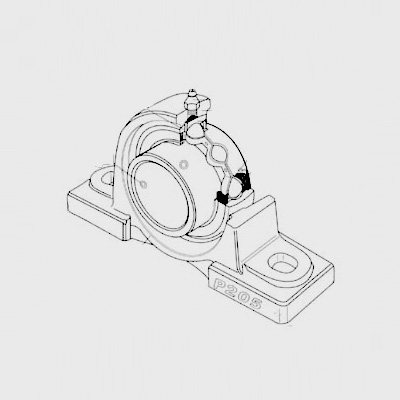
dec. . 07, 2024 06:39 Back to list
angular contact ball bearing drawing
Understanding Angular Contact Ball Bearings A Comprehensive Overview
Angular contact ball bearings are specialized components designed for handling radial and axial loads, making them essential in various mechanical applications. They differ from standard ball bearings due to their unique design and operational characteristics. This article provides an in-depth examination of angular contact ball bearings, their design, applications, and benefits.
Design Features
The primary feature of angular contact ball bearings is their raceway geometry, which is crafted to accommodate axial loads in one direction. The angle at which the balls contact the raceways varies, typically between 15 to 40 degrees. This design allows the bearings to support higher speeds and provides greater rigidity compared to deep groove ball bearings.
Angular contact ball bearings consist of an inner ring, an outer ring, balls, and a cage. The inner ring is mounted onto the shaft, while the outer ring is fitted into the housing. The balls are arranged in a way that they can effectively bear the loads applied both radially and axially.
Types of Angular Contact Ball Bearings
Angular contact ball bearings come in different configurations to suit specific needs
1. Single-Row Angular Contact Ball Bearings These bearings are the simplest form and are widely used. They can support radial and axial loads in one direction but require an opposing bearing to counteract axial forces.
2. Double-Row Angular Contact Ball Bearings These are designed to support axial loads from both directions. Their larger contact area allows for enhanced load capacity, making them suitable for heavy-duty applications.
angular contact ball bearing drawing

3. Four-Point Contact Ball Bearings This variant allows point contact between the balls and the raceways at four distinct points, supporting loads in both axial directions. They are ideal for applications where space is limited but higher load capacities are required.
Application Areas
Angular contact ball bearings are essential in numerous mechanical systems. They are commonly used in
- Machine Tools Ensuring high precision and stability in various machine operations. - Automotive Applications Found in car transmissions, wheel hubs, and steering columns to handle dynamic loads under different driving conditions. - Aerospace Critical in aircraft engines and landing gear, where high-performance standards and reliability are paramount. - Electric Motors Providing efficient operation and longevity, enabling motors to handle varying loads smoothly.
Advantages
Angular contact ball bearings offer several advantages that contribute to their widespread use
- High Load Capacity Their ability to handle both radial and axial loads makes them excellent for applications requiring robustness. - Versatile Orientation These bearings can be arranged in various configurations (back-to-back or face-to-face) to manage different loading scenarios. - Enhanced Precision The design allows for superior alignment and rigidity, facilitating more precise machinery operations.
Conclusion
In summary, angular contact ball bearings are integral to advanced engineering and manufacturing. Their specialized design allows for effective handling of combined loads, improved speed capabilities, and increased rigidity, serving a wide range of applications across industries. Understanding their design, types, and benefits is crucial for engineers and manufacturers aiming to optimize performance and reliability in their machinery. As technology advances, the development of even more efficient bearing designs will continue to play a vital role in the progress of modern engineering.
Latest news
-
Precision Thrust Ball Bearings: Expert Axial Load Solutions
NewsSep.01,2025
-
Durable Greenhouse Pillow Block Bearings for Reliable Ventilation
NewsAug.31,2025
-
Spherical Roller Bearings Applications: Heavy Duty, Self-Aligning
NewsAug.30,2025
-
Premium Deep Groove Ball Bearings | High Speed & Reliability
NewsAug.29,2025
-
Durable Scaffolding Clamps - Secure & Reliable Tube Connectors
NewsAug.28,2025
-
Common Failures in Thrust Ball Bearings and Solutions
NewsAug.22,2025
